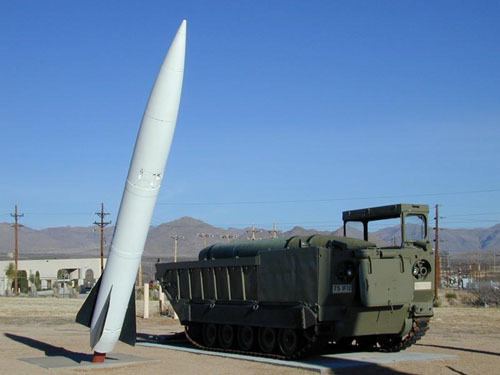Manufacturer LTV | In service 1972–1992 | |
 | ||
Unit cost ~US$800K (1996 dollars) | ||
The MGM-52 Lance was a mobile field artillery tactical surface-to-surface missile (tactical ballistic missile) system used to provide both nuclear and conventional fire support to the United States Army. The missile's warhead was developed at Lawrence Livermore National Laboratory. It was replaced by MGM-140 ATACMS, which was initially intended to likewise have a nuclear capability during the cold war.
Contents
Deployment
The first Lance missiles were deployed in 1972, replacing (together with the US-Navy's nuclear-tipped RIM-2D & RIM-8E/B/D) the earlier Honest John rocket and Sergeant SRBM ballistic missile, greatly reducing the weight and bulk of the system, while improving both accuracy and mobility.
A Lance battery (two fire units) consisted of two M752 launchers (one missile each) and two M688 auxiliary vehicle (two missiles each), for a total six missiles. The firing rate per unit was approximately three missiles per hour.
Payload
The payload consisted either of a W70 nuclear warhead with a yield of 1–100 kt or a variety of conventional munitions. The W70-3 nuclear warhead version was one of the first warheads to be battlefield-ready with an "enhanced radiation" (neutron bomb) capability. Conventional munitions included cluster bombs for use against SAM-Sites, heat seeking Anti-Tank Cluster munitions or a single unitary conventional shape-charged warhead for penetrating hard targets and for bunker busting. The original design considered a chemical weapon warhead option, but this development was cancelled in 1970.
Deactivation
The Lance missile was removed from service following the end of the Cold War and was partially replaced in the conventional role by the MGM-140 ATACMS.
Former operators
United States United States Army
United Kingdom British Army
Israel Israeli Defence Forces
Netherlands Royal Netherlands Army
Belgium Belgian Land Component
Italy Italian Army
Germany German Army
